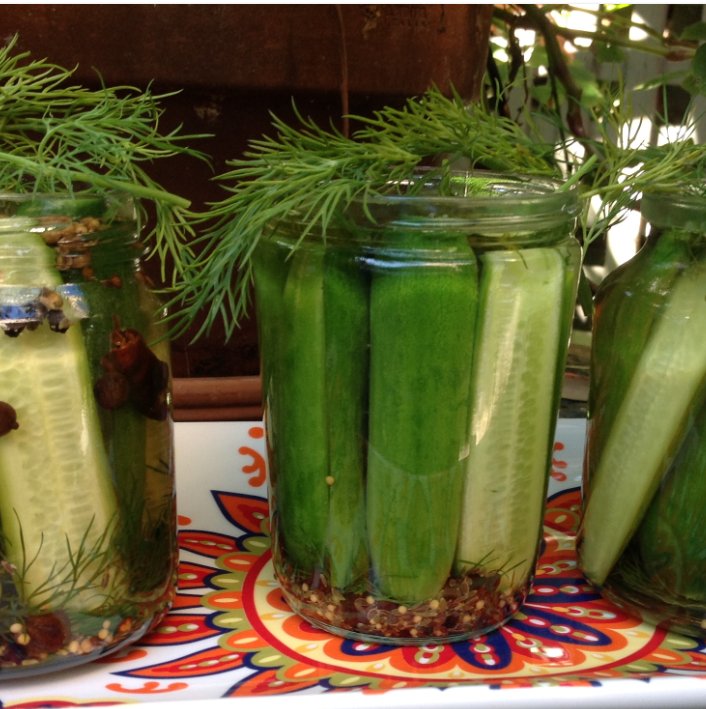In reading the contents of this post, also check: Food Safety Is Paramount
It makes sense that dill pickles should involve dill. However, the key ingredient is the seed, not the herb part. While green dill is relatively easy to find, the seeds can be difficult to track down. You might have more luck finding a packet of pickling spices which does contain dill seed, along with other spices suitable for dill pickles!
We often use dill pickles as part of a platter of nibbles. They are also a good snack option if you are feeling a little bit peckish. But there are other uses, of course: fast food outlets include dill pickles in their hamburgers. (For our recipe and other uses, see the end of this post.)
You can buy jars of dill pickles easily enough, though they will probably be imported ones. Try making your own for a fresher taste and a crunchier texture. Fresh baby cucumbers – about 10 cm long – are quite common these days in the supermarkets and greengrocers and it doesn’t take long to pickle a few jars of them and store them away in the fridge. (I have yet to see the very small ones – about 3 cm long – from which cornichons are made.)
 Experiment with the spices you use and the other ingredients. However, dill seed is essential, as is good quality vinegar. The pickles are ready after a few days and last well, especially if refrigerated. You can also experiment with other vegetables like carrots and capsicums, but make sure every raw ingredient is thoroughly washed and dried. You can make jars of mixed pickled vegetables.
Experiment with the spices you use and the other ingredients. However, dill seed is essential, as is good quality vinegar. The pickles are ready after a few days and last well, especially if refrigerated. You can also experiment with other vegetables like carrots and capsicums, but make sure every raw ingredient is thoroughly washed and dried. You can make jars of mixed pickled vegetables.
Keep your pickles on the move: when your supply is getting low, before they run out, make another lot. They make great gifts too – take along a jar instead of, or as well as, a bottle of wine.
My parents’ specialty was pickled onions. They are somewhat more challenging than cucumbers because of having to peel so many. Dad would have grown the small pickling onions, both brown and white. We kids would be given the job of peeling them while Mum would be plunging jars into and out of boiling water and then into the oven to sterilise them. In those days they used malt vinegar, somewhat stronger than wine or cider vinegar.
If you are daunted by using whole pickling onions, you could try the recipe given in this post for pieces of white or red onions. Take medium to larger onions, peel and quarter them, then pull them apart into their sections. Stuff these into a jar and add the spices and vinegar mixture. The result might surprise you, and the sections are quite handy for snacks or sandwiches.
Don’t toss out the pickling liquid. You could reboil it and reuse it for another lot of pickles, along with the leftover spices. But you can also add the liquid to a marinade or to a stew or curry. (For an interesting range of uses for dill pickle and other pickling liquids see the link at the end of this post, including a great recipe for mango chutney.)
While the green part of the dill is not an essential ingredient, we include it in our recipe as it just doesn’t seem right not to!
For the recipe, click here: Dill Pickles
For an interesting set of uses for dill pickles and the pickling juice, see: Uses for pickle juice and Best dill pickle sandwich.
For an excellent Jamie Oliver recipe where you can use your leftover pickling liquid and excess mangoes, click here: Mango Chutney. Follow the recipe as is but use pickling liquid instead of vinegar. Adjust for sugar and spices, and don’t be afraid to add in any herbs, etc from the pickling liquid later in the cooking process.
Contributions welcomed!
If you have any preserve-like recipes you regularly make, we are happy to hear about them, including the ingredients and why they are worth doing.


